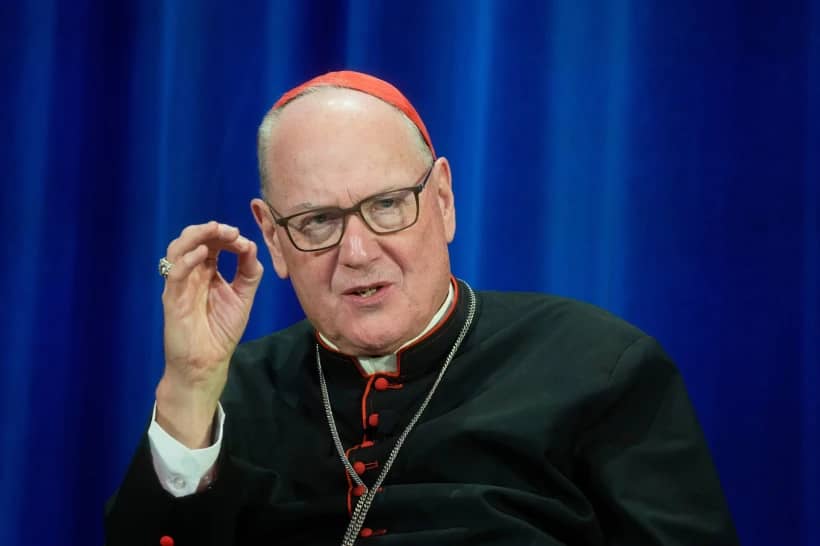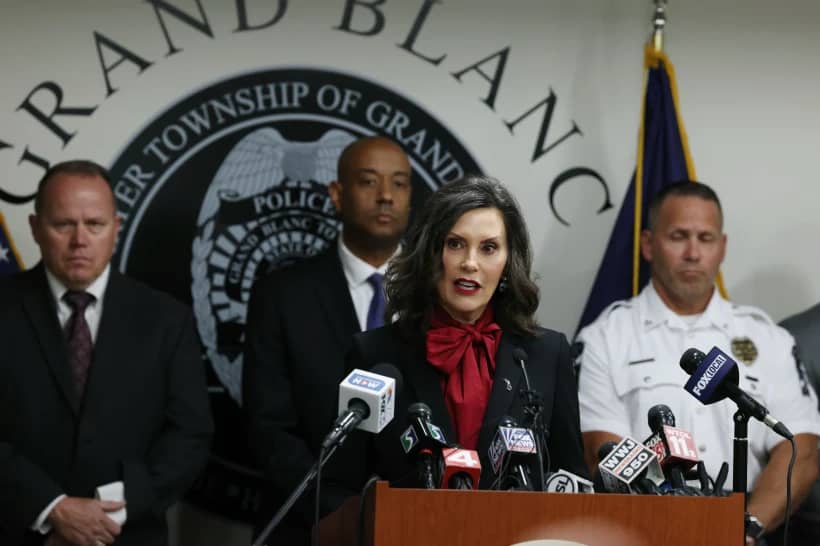WASHINGTON, D.C. — In the modern-age, news about Jesus doesn’t just sell newspapers, it racks up page views, too.
In 2016, when renovations around the site believed to protect the tomb of Christ in Jerusalem were underway, religious leaders agreed to the temporary removal of the marble slab covering the tomb so that restorers could install a moisture barrier to protect it. It would mark the first opening of the space in perhaps centuries.
A team from National Geographic, which had been at the site to document the restoration, was allowed, during a relatively short window of time, to document the opening of the tomb, in words, photos and video. National Geographic noted the interest by the number of clicks on the story and images the team posted about those 60 hours, which appeared on its website, not its iconic magazine, because of its immediacy.
“There was this incredible response to the news story in October (of 2016),” said Kathryn Keane, vice president of exhibitions for National Geographic during a Nov. 9 interview with Catholic News Service.
More than 3 million viewers worldwide flocked to the National Geographic website to read the news documenting the removal of the slabs and to see photos that included images of broken marble around the tomb inscribed with a Christian cross.
“It was one of the highest-rated stories of the year for us,” said Keane. “We got a sense from that, that there would be a lot of interest in this story.”
Though the tomb of Christ had never been featured in the pages of National Geographic, the magazine’s iconic yellow frame this December features a Rembrandt painting depicting the face of Jesus on its cover, along with an accompanying story about what archaeology reveals about the life of Jesus.
The organization also had previously published the book “In the Footsteps of Jesus,” which is now being sold in paperback at its store. National Geographic also will debut a documentary Dec. 3 on its cable channel about the restoration work at the tomb, and recently opened its “Tomb of Christ: The Church of the Holy Sepulchre Experience” virtual exhibit, which uses 3-D and VR, virtual reality, technology to provide visitors to its Washington museum a different way to visit the tomb.
“We have for many years been taking people on journeys to places that they may never get to visit,” said Keane, and with new technology, there are new ways to do that.
“We have many ways to tell a story,” said National Geographic archaeologist-in-residence Fred Hiebert. “The exhibition is a chance to walk into Jerusalem and into the church itself. The magazine article is mainly about the larger context of the footsteps of Jesus. We have a book about that, too, with maps, great storytelling, very historical … we do the whole story.”
The opportunity to present the story of the tomb arrived when officials from the Greek Orthodox Church asked National Geographic if it would be interested in covering the restoration. The Greek Orthodox, along with the Armenians and the Franciscans, share stewardship of the Church of the Holy Sepulcher, the main structure over the smaller shrine, called the Edicule (Latin for “little house”), covering the tomb.
Hiebert, who had worked on a previous exhibition about ancient Greeks, joined a group of engineers, led by scientist and professor Antonia Moropoulou, who directed a team from the National Technical University of Athens, while they restored the small shrine to structural and physical glory.
“Monuments talk and the tomb of Christ was talking to us,” said Moropoulou, who spoke briefly at the opening night of the exhibition in Washington. “This was a place full of energy … it was a tomb but it was alive.”
And the team from National Geographic captured part of that life, with images of pilgrims arriving, the work before and after the restoration, the opening of the tomb, the reopening of the Edicule and pilgrims crowding around the space once more.
J.J. Kelley, senior producer at National Geographic Explorer, had set up cameras inside the small shrine, hanging above the tomb to capture the moment when the slabs were lifted.
“I got chills, goose bumps being inside that space,” Kelley said during a panel at the museum on the opening night of the virtual “Tomb of Christ” exhibition. “It’s one of the most profound assignments you could ask for.”
Part of that journey will air in the Dec. 3 documentary. Some of it is featured in the exhibit, and other parts of it have been posted in news items on the National Geographic website, https://www.nationalgeographic.com.
“They were trusting of National Geographic, that we would get the story right,” said Keane, of the religious leaders who gave the organization an exclusive media agreement, meaning no other organizations would have access to the story, to cover the restoration. “They knew we would tell the story the right way and that we would share it with the world in a way that other media organizations wouldn’t.”
National Geographic staff writer Kristin Romey asked the opening night panel whether anyone had stopped to question why the organization, “known for our wildlife, adventure, mountain climbing, pandas, did anyone stop and ask, why Jesus?”
“National Geographic tells the stories of people,” said Kelley.
And a critical component of that includes faith and spirituality, Romey said.
“It is our job to document how people move,” including through journeys of faith, Romey said. “That is just as important as understanding farming in the desert. This is one of the most important pilgrimage sites, if not the most important in Christianity.”
Moropoulou shared during the opening evening of the exhibition her hopes for the journey of the small shrine, the tomb and a new life found in their restoration.
“When we opened tomb of Christ … it opened a door, from Jerusalem to the world, that made the history of the restoration of the holy Edicule, a possible history,” she said. “Today this history is in front of you and has opened the doors of hope, the doors of the message of the Resurrection to the world. We hope the holy Edicule restored and the exhibition … have their own trip, their autonomous voice, their own life to the world. Let’s begin with it.”














